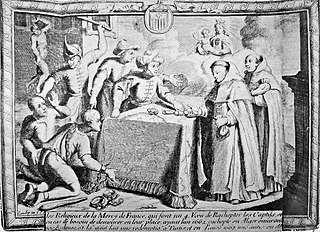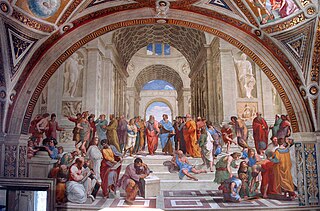| Industry | International trade |
|---|---|
| Founded | 1585 |
| Founder | Robert Dudley Ambrose Dudley |
| Headquarters | London, England |
Area served | Mediterranean Sea Atlantic Ocean |
| Products | Cloth and sugar |
| Services | Trade and commerce |
The Marocco Company or Barbary Company was a trading company established by the Sultan of Marooco and Queen Elizabeth I of England in 1585 through a patent granted to the Earls of Warwick and Leicester, as well as forty others. [1] When she wrote the patents, Elizabeth emphasized the value of the region's "divers Marchandize... for the use and defence" of England. [2]
The privilege of the company was to benefit from exclusive trade for Morocco for a period of 12 years, until its charter expired in 1597. Queen Elizabeth sent her Minister Roberts to the Moroccan sultan Ahmad al-Mansur to reside in Morocco and obtain advantages for English traders. A treaty signed in 1728 extended these privileges, especially those pertaining to the safe-conduct of English nationals. [3]
The formal beginning of Anglo-Ottoman relations dates back to correspondence between Elizabeth I and the Ottoman Sultan Murad III which led in May 1580 to an agreement between the two rulers that English merchants could pass safely through Ottoman-controlled seas and port in the eastern Mediterranean and the Barbary Coast of North Africa. This essentially granted trading privileges to the English, who for various reasons, mainly piracy, had been unable to trade efficiently in the Mediterranean since the 1550s, and in September 1581, the Turkey Company was established as a joint-stock venture to take advantage of this new monopoly on regional trade. [4]
In 1585, the Barbary Company, separate from the Turkey Company and the Venice Company (1583), who also operated in the Mediterranean and later merged into the Levant Company in 1592, was established with many of the same merchant investors, with a focus on trade along the Atlantic coast of Morocco. Morocco was at that point the main source of sugar for the English market, prior of course to the development of the West Indies plantations in the 1600s. [5]
Headed by Robert Dudley, 1st Earl of Leicester and Ambrose Dudley, 3rd Earl of Warwick, the Barbary Company achieved little regulation of affairs and was never incorporated, with its first charter expiring in 1597. [6] It was not even formally named as the Barbary Company, a conventional title. Nor was there a provision of a governor or a court of assistants like with most companies at the time. The charter itself was merely a collective licence to two noblemen and around 40 London merchants for exclusive trade with Morocco for 12 years. [7]
The main act of trade the company engaged in was the trade of English cloth for Moroccan sugar, though at its inception, there were complaints from merchants in London that the cloth was being sold excessively cheaply while the sugar was being acquired at expensive rates. [8]
Many of the company's members also ended up trading for the Levant Company due to the close geography and intertwining of interests, the success of the latter probably contributing towards the commercial defeat of the Barbary Company. [9]

Elizabeth I was Queen of England and Ireland from 17 November 1558 until her death in 1603. She was the last monarch of the House of Tudor.

The Barbary pirates, Barbary corsairs, Ottoman corsairs, or naval mujahideen were mainly Muslim pirates and privateers who operated from the largely independent Barbary states. This area was known in Europe as the Barbary Coast, in reference to the Berbers. Slaves in Barbary could be of many ethnicities, and of many different religions, such as Christian, Jewish, or Muslim. Their predation extended throughout the Mediterranean, south along West Africa's Atlantic seaboard and into the North Atlantic as far north as Iceland, but they primarily operated in the western Mediterranean. In addition to seizing merchant ships, they engaged in razzias, raids on European coastal towns and villages, mainly in Italy, France, Spain, and Portugal, but also in the British Isles, and Iceland.

The Levant Company was an English chartered company formed in 1592. Elizabeth I of England approved its initial charter on 11 September 1592 when the Venice Company (1583) and the Turkey Company (1581) merged, because their charters had expired, as she was eager to maintain trade and political alliances with the Ottoman Empire. Its initial charter was good for seven years and was granted to Edward Osborne, Richard Staper, Thomas Smith and William Garrard with the purpose of regulating English trade with the Ottoman Empire and the Levant. The company remained in continuous existence until being superseded in 1825. A member of the company was known as a Turkey Merchant.

The Saadi Sultanate, also known as the Sharifian Sultanate, was a state which ruled present-day Morocco and parts of Northwest Africa in the 16th and 17th centuries. It was led by the Saadi dynasty, an Arab Sharifian dynasty.
A chartered company is an association with investors or shareholders that is incorporated and granted rights by royal charter for the purpose of trade, exploration, or colonization, or a combination of these.

Sir Henry Lello was the English ambassador to the Ottoman Empire, Warden of the Fleet Prison, and Keeper of the Palace of Westminster. He was involved in peace negotiations with the Habsburgs and the Ottomans, as well as with the Venetian and French ambassadors regarding the trading activities in the Levant.
Sir Daniel Harvey was an English merchant and diplomat who was the English Ambassador to the Ottoman Empire from 1668 to 1672.

The Barbary slave trade involved the capture and selling of white European slaves at slave markets in the largely independent Ottoman Barbary states. European slaves were captured by Barbary pirates in slave raids on ships and by raids on coastal towns from Italy to Ireland, and the southwest of Britain, as far north as Iceland and into the Eastern Mediterranean.

There was cultural contact between Europe and the Islamic world from the Renaissance to Early Modern period.

Abd al-Wahid bin Mas'ud bin Mohammed Anun was the principal secretary to the Moroccan Emperor Mulay Ahmad al-Mansur of the Saadi Sherif dynasty and ambassador to the court of Queen Elizabeth I of England in 1600, whose primary task was to promote the establishment of an Anglo-Moroccan alliance.

Morocco–United Kingdom relations are the bilateral relations that exist between the Kingdom of Morocco and the United Kingdom.
Protestantism and Islam entered into contact during the early-16th century when the Ottoman Empire, expanding in the Balkans, first encountered Calvinist Protestants in present-day Hungary and Transylvania. As both parties opposed the Austrian Holy Roman Emperor and his Roman Catholic allies, numerous exchanges occurred, exploring religious similarities and the possibility of trade and military alliances.

The Anglo-Moroccan alliance was established at the end of the 16th century and the early 17th century between the kingdoms of England and Morocco. Commercial agreements had been reached by Queen Elizabeth I of England and the Moroccan Sultan Ahmad al-Mansur on the basis of a common enmity to Philip II of Spain. The arms trade dominated the exchange, and numerous attempts at direct military collaboration were also made.
The European consuls in the Ottoman Empire began as informal relationships between merchants residing in the Empire and the Sultan. The relationships were defined by the ahdname granted by the Sultan which would stipulate the religious freedom and exemption from the taxes that non-Muslim subjects had to pay. The religious implications of these relationships diminished over time as the commercial aspects took over.

Ottoman Tunisia, also known as the Regency of Tunis, refers to the Ottoman presence in Ifriqiya from the 16th to 19th centuries, when Tunis was officially integrated into the Ottoman Empire as the Eyalet of Tunis. The Ottoman presence in the Maghreb began with the takeover of Algiers in 1516 by the Ottoman Turkish corsair and beylerbey Aruj, eventually expanding across the entire region except for Morocco. The first Ottoman conquest of Tunis occurred in 1534 under the command of Khayr al-Din Barbarossa, the younger brother of Aruj, who was the Kapudan Pasha of the Ottoman Fleet during the reign of Suleiman the Magnificent. However, it was not until the final Ottoman reconquest of Tunis from Spain in 1574 that the Turks permanently acquired the former territories of Hafsid Tunisia, retaining it until the French occupation of Tunisia in 1881.
The Venice Company was an English chartered trading company established in 1583 to monopolise on trade in and around the Venetian colonies in the Mediterranean Sea.
The Swedish Levant Company was a Swedish chartered company founded on 20 February 1738 with the exclusive right to trade in the Levant for a period of ten years.

Slavery existed in Morocco since antiquity until the 20th-century. Morocco was a center of the Trans-Saharan slave trade route of enslaved Black Africans from sub-Saharan Africa until the 20th-century, as well as a center of the Barbary slave trade of Europeans captured by the Barbary pirates until the 19th-century. The open slave trade was finally suppressed in Morocco in the 1920s. The haratin and the gnawa have been referred to as descendants of former slaves.
Sir Edward Holmeden or Holmden (1544–1616) was an Alderman and Sheriff of London.